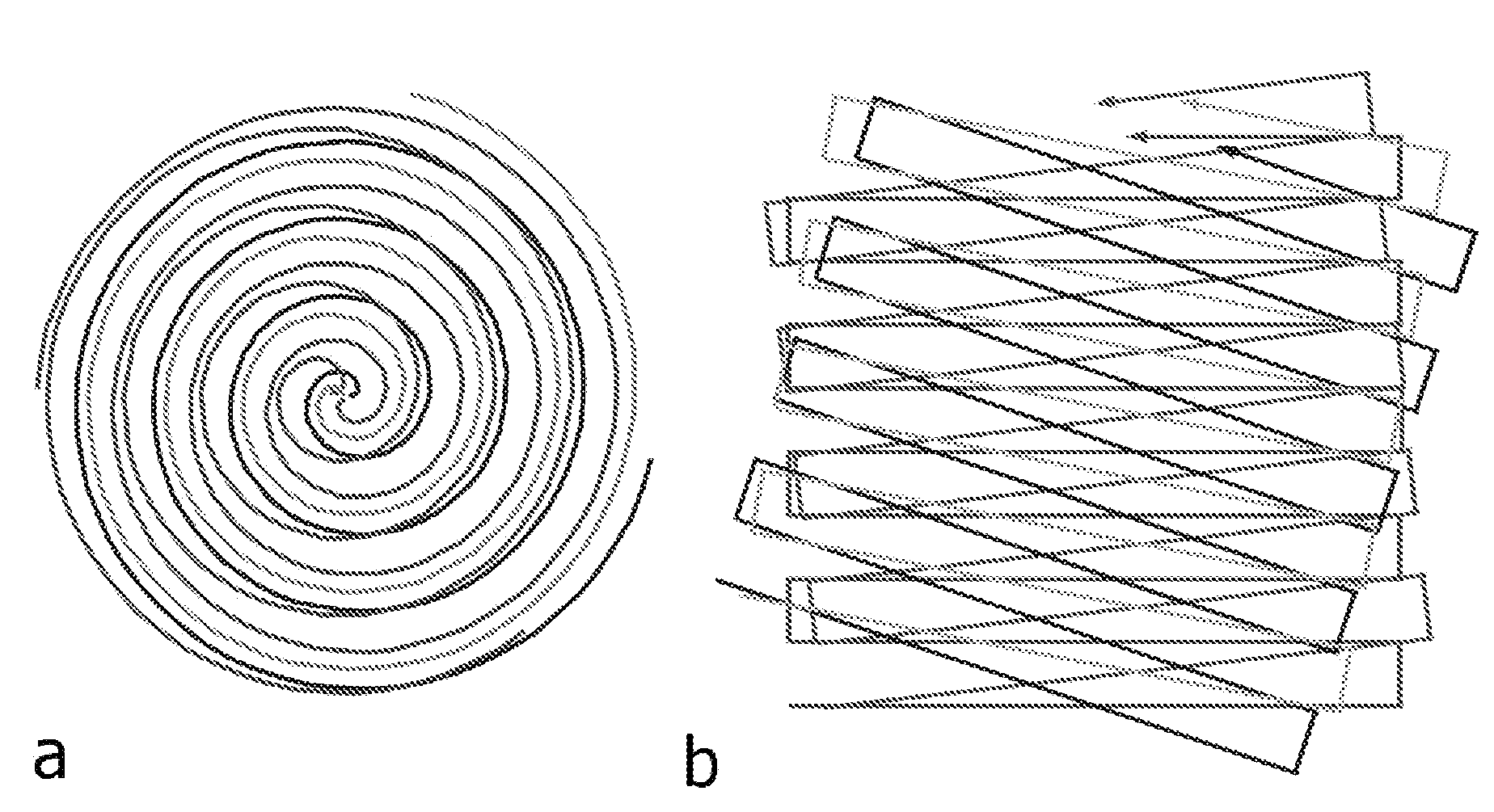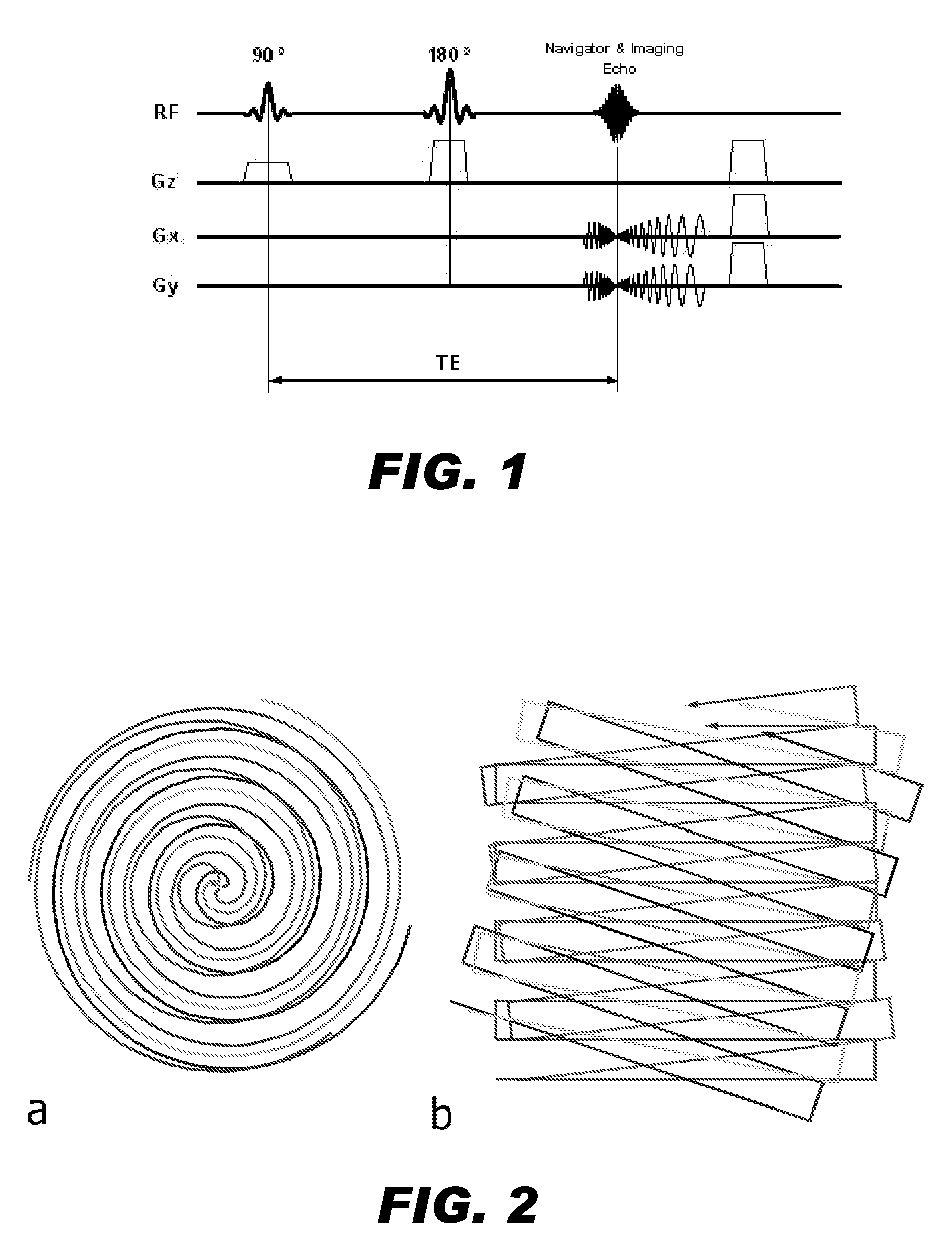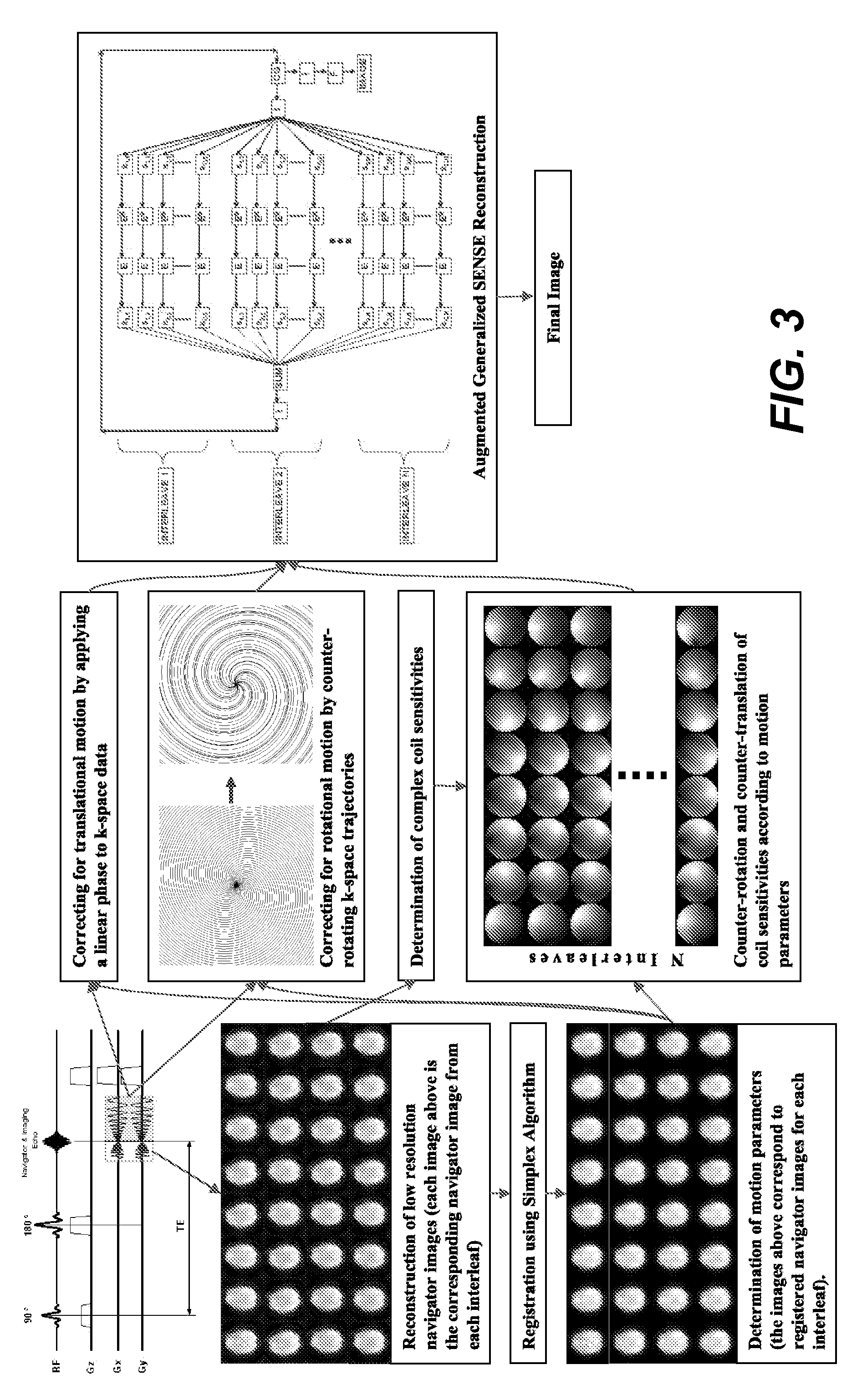Motion corrected magnetic resonance imaging
a magnetic resonance imaging and motion correction technology, applied in the field of correction of magnetic resonance imaging, can solve the problems of not realizing how 1) missing data can be synthesized, 2) prior art in retrospective motion correction often suffers from partially undersampled k-space after being corrected, and 3) image frustration, etc., to achieve the effect of improving scan robustness
- Summary
- Abstract
- Description
- Claims
- Application Information
AI Technical Summary
Benefits of technology
Problems solved by technology
Method used
Image
Examples
Embodiment Construction
[0021]As noted above, the application of conventional motion correction strategies often produces undersampled k-space data. As a result, significant residual artifacts can persist. The present invention introduces a variant of parallel imaging that reduces the net k-space undersampling and improves overall image quality. This correction scheme employs an iterative image reconstruction to synthesize missing data in k-space and exploits the complementary image encoding capacity provided by parallel imaging.
[0022]In this implementation, motion is determined from low resolution navigator images that are co-registered by an automatic registration routine. Navigator data can be derived from self-navigating k-space trajectories or in combination with other navigation schemes that estimate patient motion.
[0023]In applying motion correction in accordance with the invention, several assumptions are made including only translation and rotation of rigid body motion is present and negligible mo...
PUM
 Login to View More
Login to View More Abstract
Description
Claims
Application Information
 Login to View More
Login to View More - R&D
- Intellectual Property
- Life Sciences
- Materials
- Tech Scout
- Unparalleled Data Quality
- Higher Quality Content
- 60% Fewer Hallucinations
Browse by: Latest US Patents, China's latest patents, Technical Efficacy Thesaurus, Application Domain, Technology Topic, Popular Technical Reports.
© 2025 PatSnap. All rights reserved.Legal|Privacy policy|Modern Slavery Act Transparency Statement|Sitemap|About US| Contact US: help@patsnap.com



